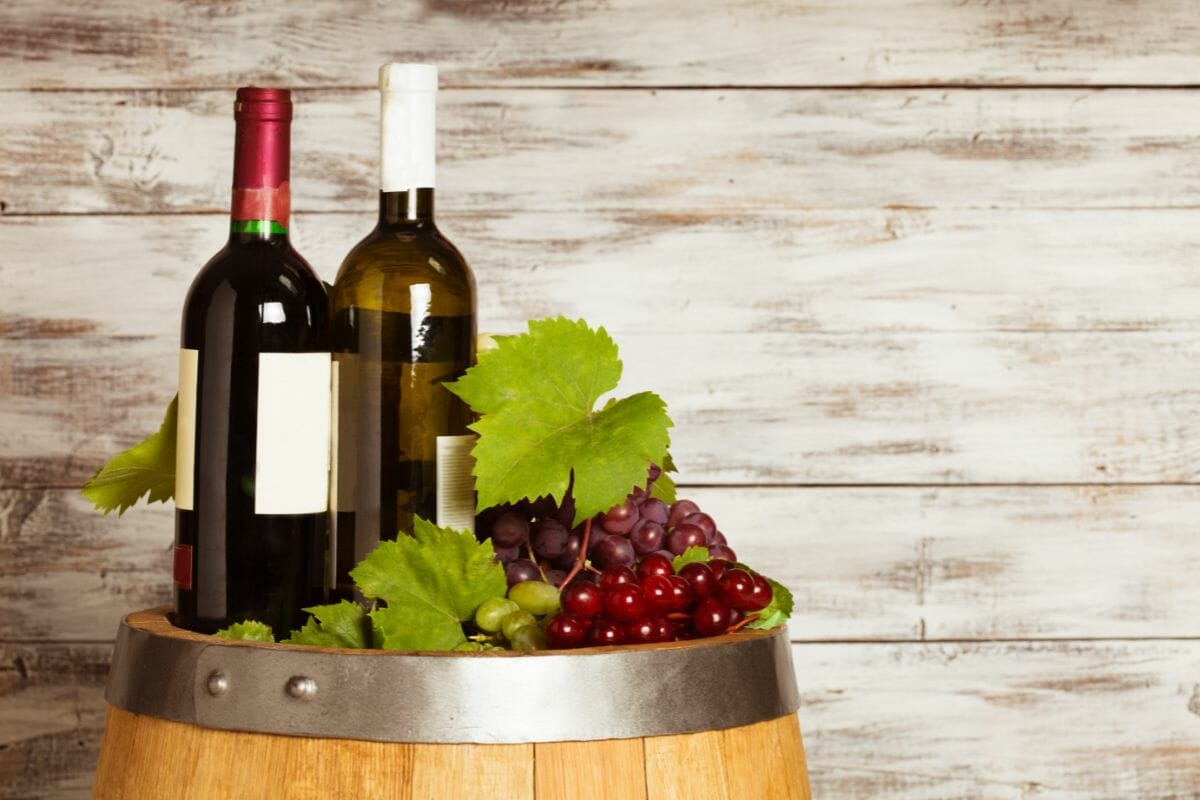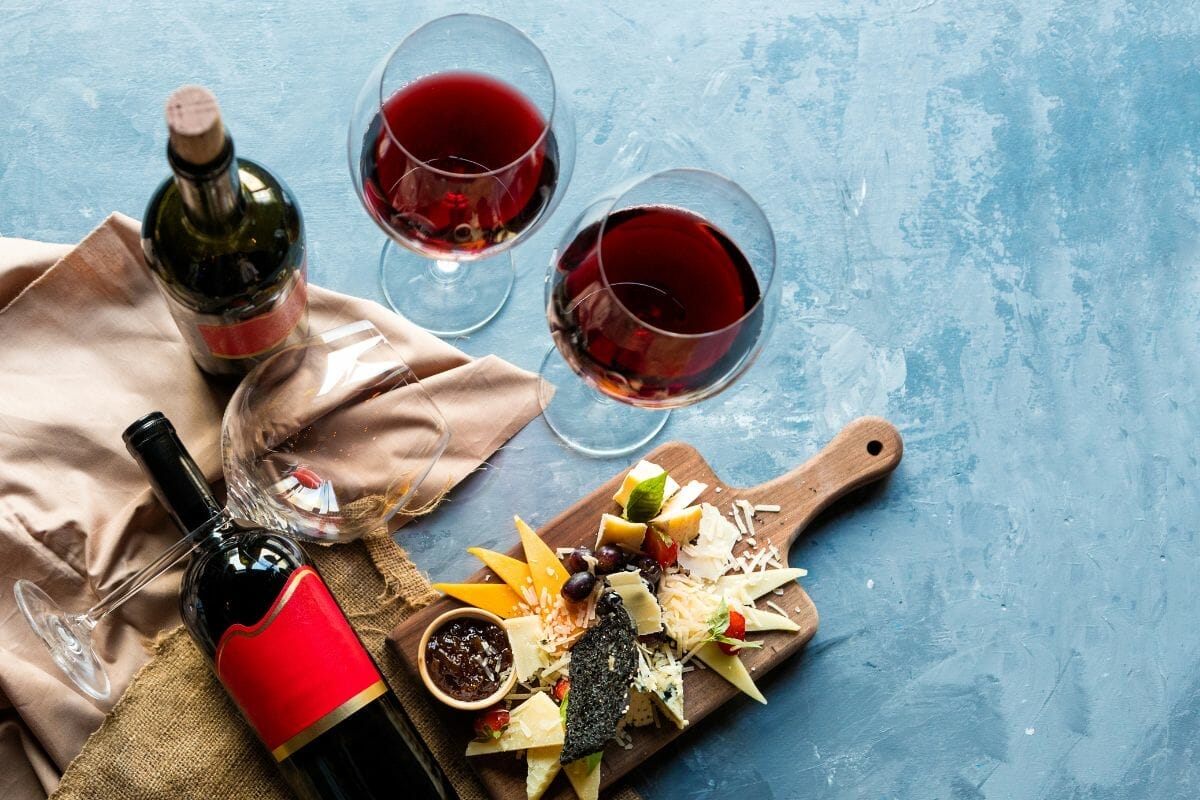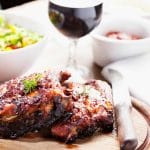Italy is one of the biggest producers of wine in the world, so if you love good wine, you should aim to be familiar with the best wines in the country.

Two very popular wines originating from Italy are Chianti and Sangiovese. These wines are similar in some wines, but they have key differences that will affect food pairings and suitability for occasions.
If you’re interested in finding out more about these must-know Italian wines, read on for a comparison of Sangiovese vs Chianti!
All About Sangiovese Wine
Sangiovese is the most widely-grown wine grape in the whole of Italy. Sangiovese wine is red and known for its acidic content, as well as its red fruit notes and other interesting flavors.
While some wines are best enjoyed by themselves without interference from other flavors, Sangiovese is often paired with various dishes, ranging from vegetarian pasta dishes to meats and strong cheeses.
The reason Sangiovese can easily be paired with food is because its tannins are supple.
Sangiovese grapes are primarily found in Italy, particularly in the Brunello di Montalcino and Chianti regions. However, these grapes are also grown in the United States (California, to be exact), Argentina, Australia, and France.
In case you were wondering, Sangiovese is pronounced as ‘san-joe-ve-zay’, with emphasis on the third syllable.
Introduction To Chianti
Like Sangiovese, Chianti is also a red wine. Chianti wine is technically also a kind of Sangiovese wine.
This is because it’s made with Sangiovese grapes, but it may also contain other red wine grapes, including Cabernet Sauvignon, Colorino, Merlot, or Canaiolo.
The reason Sangiovese and Chianti have different names is because ‘Sangiovese’ refers to the variety of grape, whereas ‘Chianti’ refers to the region in which the grape is grown.
As we mentioned earlier, Sangiovese grapes are often grown in the Chianti region. So, technically, a wine made with Sangiovese grapes grown in Chianti would be considered a Chianti wine.
However, Sangiovese grapes grown outside of Chianti and then made into wine would not be referred to as Chianti.
Chianti wine does still need to contain a certain amount of Sangiovese grapes to be considered a Chianti. At least 70% of the grapes in a Chianti must be Sangiovese.
Sangiovese And Chianti Flavor Comparison

The differences between Sangiovese wine and Chianti are more than just technical in nature. There’s also a distinct difference between Chianti and most Sangiovese wines in terms of flavor.
Sangiovese’s flavor is rich, and the first notes that will hit your palate are those of red fruits. These might include plum, cherry, blackberry, and currants.
However, you’ll also be able to detect other complementary flavors, such as spices, licorice, and truffles, along with herbaceous elements.
Depending on the specific bottle of Sangiovese, you may also taste chocolate, tobacco, and even tomato.
Like Sangiovese, Chianti is also quite acidic, and you can taste the same flavors of cherry and herbs, along with violet notes. Both wines may have smoky notes, too. However, with Chianti, you’re more likely to detect notes of balsamic vinegar.
The sour taste of Chianti is usually more pronounced than Sangiovese, and there’s none of the chocolate flavor you might find with Sangiovese, although you might experience some espresso and tobacco notes if you purchase a more expensive bottle.
Sangiovese Vs Chianti Food Pairings
Because Sangiovese and Chianti have slightly different flavor profiles, the recommended food pairings for each wine will be different, too.
Sangiovese is widely recommended as a complementary wine for tomato-based pasta dishes, such as spaghetti bolognese and lasagna. It also goes really well with meat (especially preserved meats like salami) and strong cheeses like pecorino.
There is some overlap between Sangiovese and Chianti food pairings. Chianti also goes well with tomato, meat, and cheese. The meats that pair well with Chianti are also similar to Sangiovese. Both wines go well with pork, meatballs, and sausages, as well as steak.
However, specific Chianti pairings we recommend include soups containing beans and chickpeas, salsa verde, and anything made with a lot of olive oil.
Final Thoughts
You may have been surprised to know that there is a significant overlap between Sangiovese and Chianti wine.
Sangiovese wine is a type of wine made from Sangiovese grapes. Chianti is a more specific wine, which is also made with Sangiovese grapes, but these must be grown in the Chianti region, and the wine may contain other types of grapes, too.
Chianti and Sangiovese wines bring similar flavor profiles to the table, but they have slightly different notes. Chianti has more of a sour flavor, while Sangiovese tends to have more chocolate and tobacco notes.
Frequently Asked Questions
Chianti Classico is a smaller region within the Chianti region. In this region, the percentage of Sangiovese grapes required to label wine a Chianti is 80%.
Also, no white grapes are allowed in the production of Chianti Classico wine: they must all be red wine grapes.
If that weren’t specific enough, if a wine is labeled Chianti Classico, that means it has a certain combination of flavors and aromas. Chianti Classico is specifically a savory wine with wild berry aromas and a slight earthiness, as well as floral notes of iris and violet.
There’s a certain spiciness to it as well.
Because the rules surrounding what constitutes a Chianti are more specific than Sangiovese, Chianti wines tend to be more expensive than Sangiovese.
This means that if you’re looking for a special occasion wine, Chianti is often considered the better choice – although, of course, you should prioritize your own and your guests’ preferences when choosing a wine for any occasion.
Chianti Riserva is a type of Chianti that has been aged for over 3 years. This softens the tannins in the wine, and as a result, this kind of Chianti is considered of a higher standard compared to other types of Chianti.
There’s also Chianti Superiore, which is a very specific type of Chianti made with Sangiovese grapes that must have been grown in regions outside Classico. Chianti Superiore also needs to be aged for more than 9 months in order to get the label.
- Moscato vs Roscato: A Comprehensive Comparison of Sweet Wines - December 15, 2023
- Should White Wine Be Chilled? Expert Insights on Serving Temperature - December 14, 2023
- Moscato vs Riesling: A Sweet Wine Showdown - December 8, 2023










